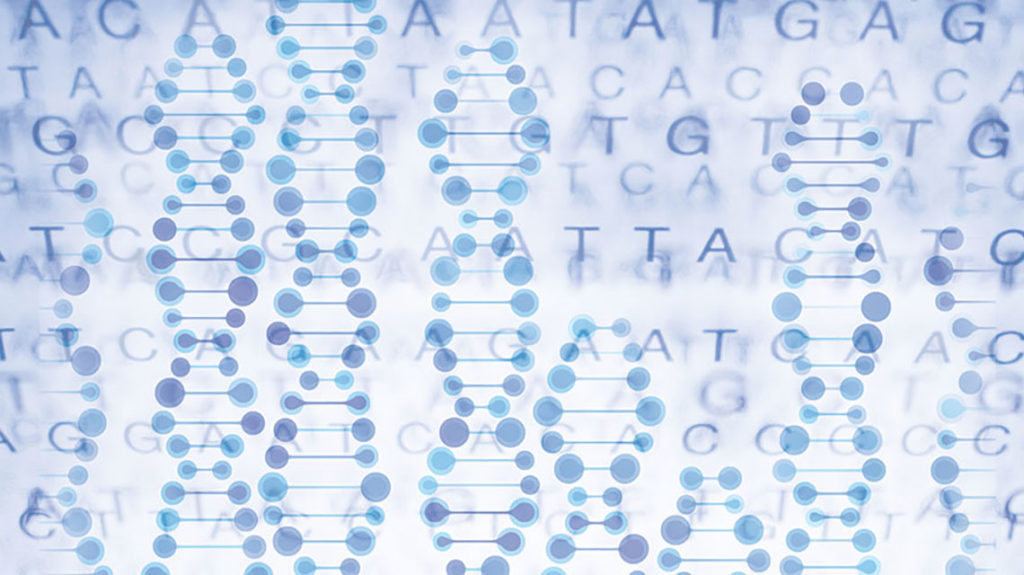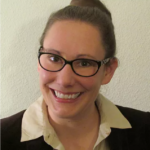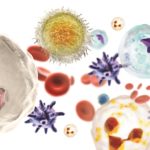Chaotic Genomes in Childhood Bone Tumors Are Not Always Unstable
Chaotic Genomes in Childhood Bone Tumors Are Not Always Unstable https://pediatricsnationwide.org/wp-content/uploads/2020/11/Achieving-Clarity-Header-1024x575.jpg 1024 575 Jessica Nye, PhD Jessica Nye, PhD https://pediatricsnationwide.org/wp-content/uploads/2021/09/JNye_glasses.png- May 31, 2023
- Jessica Nye, PhD

The structural genomic complexity that characterizes most osteosarcoma tumors in children was not evidence of an unstable genome and a driver of cell-to-cell variations in gene expression within each tumor.
“We’ve been trying to understand how tumor cells change as they become resistant to therapy or as they metastasize and spread to different parts of the body. Osteosarcoma is a very deadly tumor that tends to kill patients when it spreads to the lungs,” says Ryan D. Roberts, MD, PhD, a principal investigator for the Center for Childhood Cancer Research at the Abigail Wexner Research Institute at Nationwide Children’s Hospital and senior author of two articles published in Cancer Research Communications and BMC Biology.
The first paper focuses on the genomic heterogeneity of osteosarcoma tumor cells during their evolution from primary bone tumor growth to lung metastasis. They did this by performing whole genome sequencing on samples from five patients who were in differing stages of disease.
“Osteosarcoma is a tumor whose genome is defined by chaos. It’s like you took all the genes and put them in a blender. We had always thought that meant these tumors were really unstable with the consequence that we would find, at a single cell level, cells that had a lot of one gene and cells that have a lot of another gene,” says Dr. Roberts.
However, that is not what they found. While the tumor cells were gnomically complex with a high degree of aneuploidy, chromosomal instability, whole-genome doubling, extensive single copy-number aberrations and deletions, the tumor cell lineages were surprisingly homogeneous.
These complex and highly abnormal genomic profiles also appeared to be conserved over time. In longitudinal analyses of samples from patients in different disease stages (e.g., diagnosis and relapse), the tumor cells exhibited conservation of single copy-number aberrations.
Even though these genomic structures exhibit unexpected stability as osteosarcoma lesions develop, cells within a tumor still establish significant variability from one cell to another. To investigate how this variability changes as cells adapt to different environments, as in metastasis, Dr. Roberts and his colleagues used a single-cell RNA-sequencing approach on two in vitro and two in vivo models to investigate gene expression in the second study.
Their results suggest that tumors maintain this cell-cell variability, even when metastasis selects for small groups of clonally-related cells.
“The heterogeneity that we see from cell to cell must happen at a level that’s not genetic. So, it’s epigenetic,” says Dr. Roberts. “There’s no single cellular phenotype indicative of a resistant phenotype or with the potential to metastasize. Instead, there’s multiple different populations that look very different.”
They also identified transcriptional profiles that could differentiate cells sampled from the tibia or the lung. For instance, cells from the lung tissues had upregulated tumor necrosis factor-a signaling whereas cells from the tibia had increased glycolysis signaling.
Dr. Roberts believes the results of these studies will have important implications for the treatment of osteosarcoma, concluding, “We treat kids who have tumors with drugs and then we measure how the tumors change. If it gets bigger, then we say that it failed, and if it gets smaller, then we say that it worked. But what these studies suggest is that we probably need to drill down further. Because it’s possible that we’ve thrown away a lot of drugs that work really well for some cells within a tumor, but the tumors still grow because that only solved part of the problem. What I think we need to do is to incorporate more and better biology, into our clinical trials. Because if we see that a drug targets one subtype, but not another, well then maybe we have another drug that targets the other. If we put those two together, now maybe we’re making progress.”
References:
- Rajan S, Zaccaria S, Cannon MV, Cam M, Gross AC, Raphael BJ, Roberts RD. Structurally Complex Osteosarcoma Genomes Exhibit Limited Heterogeneity within Individual Tumors and across Evolutionary Time. Cancer Res Commun. 2023;3(4):564-575.
- Rajan S, Franz EM, McAloney CA, Vetter TA, Cam M, Gross AC, Taslim C, Wang M, Cannon MV, Oles A, Roberts RD. Osteosarcoma tumors maintain intra‑tumoral transcriptional heterogeneity during bone and lung colonization. BMC Biol. 2023;21(1):98
About the author
Jessica Nye, PhD, is a freelance science and medical writer based in Barcelona, Spain. She completed her BS in biology and chemistry and MS in evolutionary biology at Florida State University. Dr. Nye studied population genetics for her doctorate in biomedicine at University of Pompeu Fabra. She conducted her postdoctoral research on the inheritance of complex traits at the Autonomous University of Barcelona.
- Jessica Nye, PhDhttps://pediatricsnationwide.org/author/jessica-nye-phd/
- Jessica Nye, PhDhttps://pediatricsnationwide.org/author/jessica-nye-phd/
- Jessica Nye, PhDhttps://pediatricsnationwide.org/author/jessica-nye-phd/
- Jessica Nye, PhDhttps://pediatricsnationwide.org/author/jessica-nye-phd/










